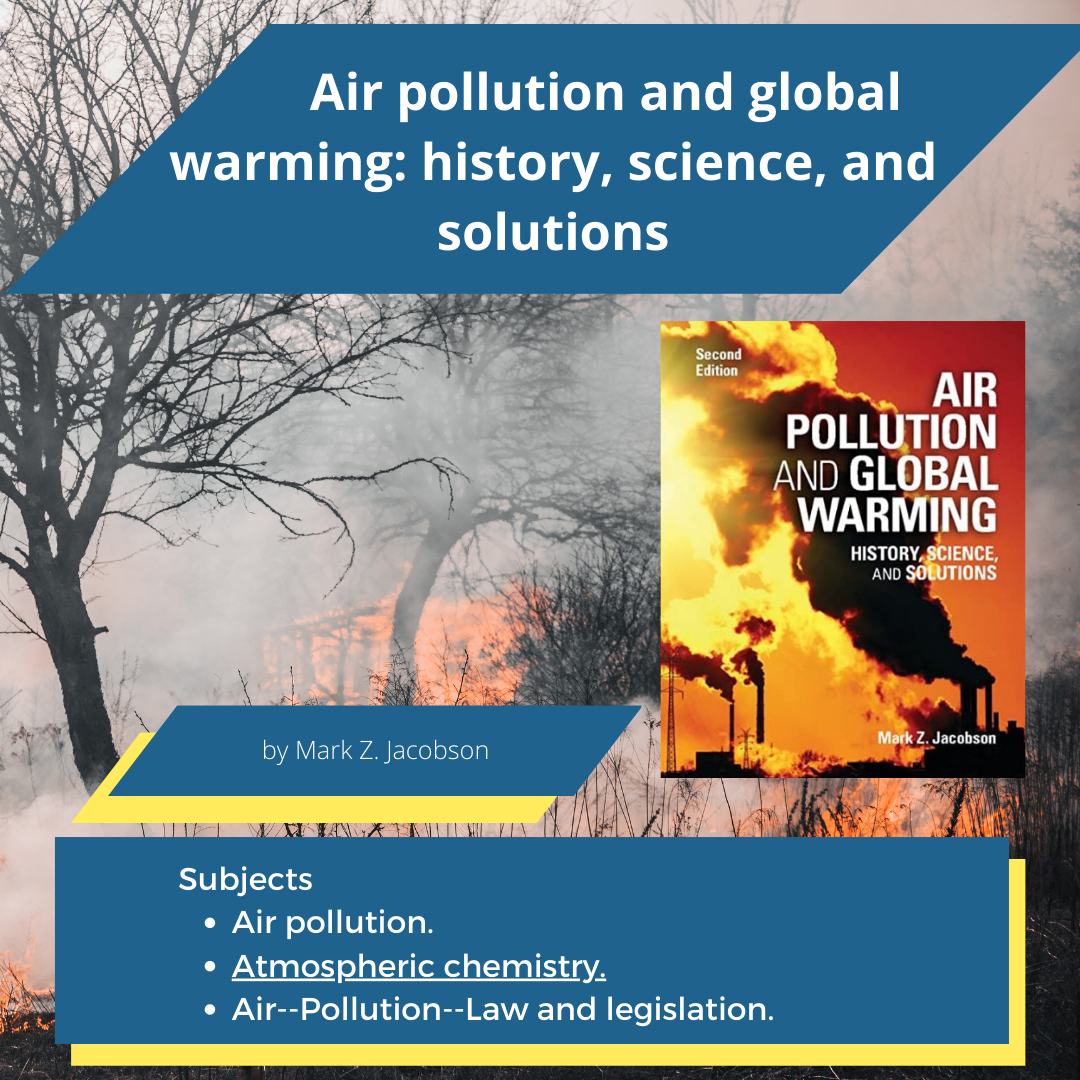Air pollution and global warming: history, science, and solutions
Summary
- "New edition of full-color introductory textbook for students taking a course on air pollution or global warming, whatever their background"-- Provided by publisher.
- "This new edition of Mark Jacobson's textbook provides a comprehensive introduction to the history and science of the major air pollution and climate problems that face the world today, as well as the energy and policy solutions to those problems. Every chapter has been brought completely up-to-date with new data, figures, and text. There is a new additional chapter on large-scale solutions to climate and air pollution problems. Many more color photographs and diagrams and many additional examples and homework problems have been added. This is an ideal introductory textbook on air pollution for students taking courses in atmospheric chemistry and physics, meteorology, environmental science, Earth science, civil and environmental engineering, chemistry, environmental law and politics, and city planning and regulation. It will also form a valuable reference text for researchers, and an introduction to the subject for general audiences. Mark Z. Jacobson is Director of the Atmosphere/Energy Program and Professor of Civil and Environmental Engineering at Stanford University. He is also a Senior Fellow of the Woods Institute for the Environment and of the Precourt Institute for Energy. He has been on the faculty at Stanford since 1994. His research involves the development and application of numerical models to understand the effects of energy systems, vehicles, and other emission sources on climate and air pollution and the analysis of renewable energy resources. He received the 2005 American Meteorological Society Henry G. Houghton Award, based in part on his discovery that black carbon may be the second-leading cause of global warming after carbon dioxide. In 2010, he was appointed to the Energy Efficiency and Renewables Advisory Committee by the U.S. Secretary of Energy"-- Provided by publisher.
Contents
- Machine generated contents note: 1. Basics and discovery of atmospheric chemicals; 2. The sun, the Earth, and the evolution of the Earth's atmosphere; 3. Structure and composition of the present-day atmosphere; 4. Urban air pollution; 5. Aerosol particles in the polluted and global atmosphere; 6. Effects of meteorology on air pollution; 7. Effects of pollution on visibility, UV radiation, and colors in the sky; 8. International regulation of urban smog since the 1940s; 9. Indoor air pollution; 10. Acid deposition; 11. Global stratospheric ozone reduction; 12. The greenhouse effect and global warming; 13. Energy solutions to air pollution and global warming.


